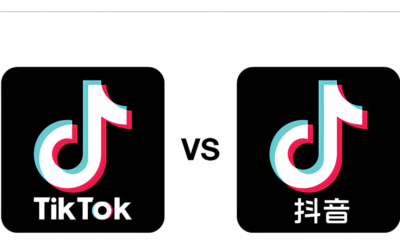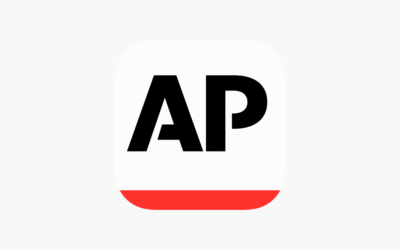Pakistan Landscape of the Digital World
Over the past few years, there has been a notable improvement in Pakistan’s digital landscape. The country has more than 190 million mobile connections and over 130 million internet users, making it more connected than ever. Further facilitated by the influx of low-priced smartphone devices and 4G services, which have made the internet more accessible in even rural regions.
The Digital Pakistan Vision is one of the government’s plans to enhance internet infrastructure, promote digital literacy, and foster the development of the technology sector. Meanwhile, tech startups, especially in the areas of e-commerce, health, and education, are developing rapidly, thanks to platforms such as the National Incubation Center (NIC) and Ignite. This expanding digital landscape is helping to transform the lifestyle of people, their work, and their social interactions in the country.
Digital Age Shifts in Culture
Advances in technology are transforming the communication and expression processes of the people in Pakistan. The use of apps such as WhatsApp, TikTok, YouTube, and Instagram has become a significant aspect in people’s, particularly young people’s, everyday lives. Citizens no longer depend on mainstream media to access news, opinions, and entertainment as they can share them over the internet. This virtual exposure means that world trends and lifestyles have been adopted by local places, changing fashion, language, and even humor. Consequently, the border between traditional and modern cultural values is getting more fluid.
Social media, at the same time, has given new voices a platform. There is an increase in the popularity of digital influencers, vloggers, and independent artists, and the formation of a certain opinion. On the one hand, this opens the principles of freedom of expression; on the other hand, it raises some questions about hate speech on the internet, falsehoods, and cultural backlash. To illustrate, viral content is sometimes perceived as conflicting with conservative standards, which, in turn, creates a debate about the appropriate standards for acceptable content in the Pakistani digital public sphere.
Society and the Dynamics of Society
Changes are also being brought about by technology in Pakistani society. Education is one of the significant changes. With the increasing availability of Internet-based educational spaces, such as Taleemabad, Sabaq.pk, and government-sponsored tele-school projects, students can study from any location or region as long as they have access to an adequate smartphone or computer. This is particularly useful for rural or underserved students where schools are unavailable or of poor quality. As the COVID-19 pandemic emerged, online learning proved necessary, and it remains a significant factor in the delivery of education.
You May Like To Read: Digital Propaganda & Conspiracy Theories: Psychology and Persuasion (IW3)
Digital platforms are also breaking social barriers. Women who would otherwise have had no access to work or education are now resorting to online businesses, freelancing, and online educational courses from the comfort of their own homes. These are opening up new opportunities and making a difference in reducing the gender gap, although access to technology is not equal in all aspects. On the one hand, the issues of cyberbullying and online harassment, and spreading clear news demonstrate the necessity of approaching the use of digital tools carefully and with due caution.
Work, Employment and the Digital Economy
Pakistan is also changing the way things are done, and this is largely due to technology. Many Pakistani youth are now earning money online by working on freelance websites such as Upwork, Fiverr, and PeoplePerHour. The country has one of the highest rates of freelancing work, particularly in digital marketing, programming, and other web-based jobs such as graphic design. The government is facilitating this transition through various programs, such as DigiSkills and E-Rozgar, to train individuals for online employment without the need to leave their homes.

Source: Fridaytimes
The e-business sector is also expanding. E-commerce outlets like Daraz, Foodpanda, and Bykea are making the purchase and sale of goods, as well as the provision of services, easier. Small business owners have now resorted to social media and online marketplaces to reach a wider customer base, particularly through 11.11 and Black Friday sales.
In the meantime, online payments in the form of Easypaisa, JazzCash, and Raast, supported by the government, are expediting and securing transactions. Nevertheless, informal online work still presents several challenges that workers encounter, including difficulties accessing the internet, inadequate digital training, and job insecurity.
Government and Policy Interventions:
The Government of Pakistan has made several moves aimed at fostering digital expansion. The Digital Pakistan Vision, established in 2019, aims to enhance internet services, commercialize digital skills, and foster a technology-friendly ecosystem. It has emphasized the five aforementioned areas: connectivity, digital infrastructure, e-government, digital skills, and innovation. The vision is to assist in laying policies and projects that will draw more people into the digital economy.

Source: digitalpakistan
The government also created training opportunities where youth could receive free training in various fields through initiatives such as DigiSkills, the National Freelance Training Program (NFTP), and e-Rozgar, which provided training in activities like graphics, digital marketing, and web development. Such programs aim to train young people to become freelancers and start their own businesses in the emerging digital employment sector.
You May Like To Read: How AP News Paints Only the Dark Side of Pakistan?
Moreover, the use of digital instruments through e-Office and Citizen Portal is also enhancing the delivery of government services, as well as interaction with citizens. Laws to develop cybersecurity and data protection are also in the works, but advanced measures to protect Internet users are expected, as experts recognize a need to improve this area.
Problems and Challenges
Despite progress, Pakistan faces several challenges in its digital journey. The significant problem is the digital divide, as a substantial portion of individuals, particularly in rural or low-income regions, lack access to a dependable internet connection, suitable equipment, or the use of digital skills. This leads to disparities in education, employment, services, and facilities.
Another area of increasing concern is cybersecurity, with online fraud, hacking, and data disclosure becoming more common, and existing laws not being sufficiently robust or definitive to ensure that their users can be adequately protected.
Additionally, misinformation and fake news are easily disseminated on social media and can even have a profoundly detrimental impact on reality. It is also influencing mental health, whereby people, especially the youth, spend more time online, and this may cause anxiety, depression, and addiction. To tackle these problems, it is necessary to create stricter legislation, improve the level of awareness in the population, and create technology policies that do not discriminate against anyone.
The Way Ahead
What needs to be done now is to make the digital transformation in Pakistan more inclusive, secure, and sustainable. The major ways to overcome the digital divide are connecting underprivileged areas to the internet, reducing the prices of digital tools, and encouraging digital literacy, especially among females and marginalized populations. The private sector should be collaborated with more closely by the government to promote startup innovation and modernize digital infrastructure.
Meanwhile, new legislation regarding data security, privacy, and online behavior is necessary to make the places on the Internet safer. With the help of intelligent policy and conscious citizens, along with a positive approach to technology usage, Pakistan will be able to fully explore its digital future and ensure that technology is accessible to all citizens.






